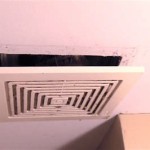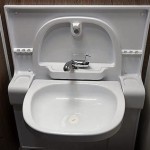How to Tile an Uneven Bathroom Floor
Tiling a bathroom floor presents unique challenges, especially when the subfloor is uneven. An uneven floor can lead to cracked tiles, uneven grout lines, and an overall aesthetically displeasing result. Successfully tiling an uneven bathroom floor requires careful preparation, the right materials, and methodical installation techniques. This article outlines the process, emphasizing key considerations for achieving a professional and durable tiled surface.
Before commencing any tiling project, a thorough assessment of the subfloor is crucial. This involves identifying the extent and nature of the unevenness. Variations in height, dips, and humps must be located and measured. Tools like a long level (at least 4 feet), a straight edge, and a measuring tape are indispensable for this assessment. Place the level or straight edge on the floor in various directions to identify high and low spots. Use the measuring tape to determine the depth of any dips or the height of any bumps. Document these findings, either with a written record or a diagram, as this information will guide the subsequent leveling process.
Several factors contribute to uneven bathroom floors. These may include settling of the building foundation, damage from water leaks, or poor initial construction practices. Identifying the underlying cause, if possible, can inform decisions about long-term solutions and prevent future issues. For example, if a leak is causing the unevenness, repairing the leak is essential before tiling. Ignoring the root cause can lead to a recurrence of the problem even after the floor is leveled and tiled.
Subfloor Preparation: The Foundation for Success
The success of a tiling project on an uneven bathroom floor hinges on proper subfloor preparation. This often involves leveling the existing floor using various techniques and materials. The choice of leveling method depends on the severity of the unevenness and the type of subfloor material (e.g., concrete, wood, or existing tile).
Self-leveling underlayment (SLU) is a cement-based or gypsum-based product designed to create a smooth, level surface. It is particularly effective for addressing minor to moderate unevenness, typically up to 1 inch. The application process involves mixing the SLU with water according to the manufacturer's instructions, then pouring the mixture onto the prepared subfloor. The self-leveling properties of the material allow it to flow and fill in low spots, creating a consistent plane. SLU is generally suitable for concrete subfloors or properly prepared wood subfloors.
Before applying self-leveling underlayment, meticulous preparation is essential. The subfloor must be clean, free of loose debris, and primed with a bonding agent recommended by the SLU manufacturer. This ensures proper adhesion and prevents the SLU from cracking or delaminating. Cracks in the subfloor should be addressed with a crack isolation membrane or a patching compound before applying the SLU. Damming around drains and doorways may be necessary to contain the SLU and prevent it from flowing into unwanted areas.
For more significant unevenness, or when dealing with specific subfloor issues like rotted wood, patching compounds may be necessary. These compounds are typically cement-based or epoxy-based and are applied with a trowel to fill in low spots or repair damaged areas. Feathering the edges of the patch is crucial to create a smooth transition and avoid creating new unevenness. Multiple layers of patching compound may be required to achieve the desired level of flatness. Patching compounds are versatile and can be used on various subfloor materials.
In situations where the subfloor is severely damaged or uneven, removing the existing subfloor and installing a new one may be the most effective solution. This approach provides a clean slate and allows for the installation of a level, structurally sound base for the tile. The new subfloor can be constructed from plywood, cement board, or other suitable materials, depending on the existing floor joists and building codes. Ensuring that the new subfloor is properly fastened and supported is essential for long-term stability.
Regardless of the leveling method chosen, it is critical to allow the leveling material to fully cure according to the manufacturer's instructions before proceeding with tiling. Premature tiling can lead to moisture entrapment, cracking, or other problems. Check the moisture content of the leveling material with a moisture meter to ensure that it is within the acceptable range for tiling.
Selecting the Right Materials for Uneven Surfaces
The choice of materials, including the tile, mortar, and grout, is critical for successfully tiling an uneven bathroom floor. Opting for materials that can accommodate slight variations in the subfloor and provide flexibility can help prevent cracking and ensure a durable installation.
Smaller tiles, such as mosaics or subway tiles, are generally more forgiving on uneven surfaces than larger format tiles. Their smaller size allows them to conform to slight contours and minimize the appearance of unevenness. Larger tiles, on the other hand, require a perfectly flat surface to avoid lippage (uneven tile edges) and potential cracking. If larger tiles are desired, meticulous leveling and a thicker mortar bed are essential.
Flexible mortars, also known as modified thin-set mortars, are designed to accommodate slight movement and flexure in the subfloor. These mortars contain polymers that enhance their bonding strength and flexibility, making them less prone to cracking due to minor subfloor imperfections. Select a mortar that is specifically formulated for use with the chosen tile type and subfloor material. Consult the mortar manufacturer's recommendations for appropriate application thickness and curing time.
Epoxy grout offers superior durability, water resistance, and stain resistance compared to cement-based grout. It is also less prone to cracking and shrinkage, making it a suitable choice for bathrooms with potential moisture exposure and minor subfloor movement. While epoxy grout can be more challenging to install than cement-based grout, its long-term benefits often outweigh the initial difficulty. If using cement-based grout, consider adding a grout additive to enhance its flexibility and water resistance.
Crack isolation membranes are thin, flexible sheets or liquid-applied coatings that are installed between the subfloor and the tile layer. These membranes act as a buffer, absorbing stress and preventing cracks in the subfloor from propagating to the tile surface. Crack isolation membranes are particularly beneficial in bathrooms with known subfloor movement or potential for cracking. Following the membrane manufacturer's instructions for installation and overlap is essential for proper performance.
Tiling Techniques for Uneven Floors
Even with careful subfloor preparation and the selection of appropriate materials, proper tiling techniques are essential for achieving a professional and durable result on an uneven bathroom floor.
Back-buttering each tile before setting it into the mortar bed ensures full coverage and optimal adhesion. This involves applying a thin layer of mortar to the back of each tile using a flat trowel. Back-buttering fills in minor imperfections on the tile surface and creates a stronger bond between the tile and the mortar bed. This technique is particularly important when using larger tiles or when dealing with slight unevenness in the subfloor.
Maintaining consistent grout lines is crucial for creating a visually appealing and uniform tiled surface. Use tile spacers to ensure that the grout lines are consistent in width and alignment. The size of the grout lines can also affect the appearance of the tiled floor. Wider grout lines can help to visually minimize slight variations in tile height, while narrower grout lines require a more perfectly level surface. Choose a grout line width that is appropriate for the tile size and the desired aesthetic.
Regularly check the levelness of the tiles as you install them. Use a level or straight edge to ensure that the tiles are aligned and that there is no lippage (uneven tile edges). Minor adjustments can be made by adding or removing mortar underneath the tiles. If significant lippage is unavoidable, consider adjusting the tile layout or using a tile leveling system.
Tile leveling systems are designed to minimize lippage and create a perfectly flat tiled surface. These systems typically consist of clips and wedges that are inserted between the tiles during installation. The wedges are tightened to level the tiles and maintain a consistent surface height. Tile leveling systems can be particularly helpful when using larger format tiles or when dealing with uneven subfloors. However, they require careful installation and removal to avoid damaging the tiles or the grout lines.
After the mortar has fully cured, apply grout to fill the spaces between the tiles. Follow the grout manufacturer's instructions for mixing and application. Use a grout float to work the grout into the grout lines, ensuring that they are completely filled. Remove excess grout with a damp sponge, being careful not to remove grout from the grout lines. Allow the grout to cure according to the manufacturer's instructions before sealing.
Sealing the grout helps to protect it from staining, water damage, and mildew growth. Apply a grout sealer according to the manufacturer's instructions. Some sealers require multiple coats for optimal protection. Regular cleaning and maintenance will help to prolong the life of the grout and keep the tiled floor looking its best.
Careful planning, meticulous preparation, and the use of appropriate materials and techniques are essential for successfully tiling an uneven bathroom floor. By addressing the unevenness of the subfloor and paying attention to detail throughout the installation process, a durable and aesthetically pleasing tiled surface can be achieved.

How To Tile An Uneven Floor A Step By Guide Atlas Ceramics

How To Tile An Uneven Floor A Step By Guide Atlas Ceramics

How To Tile An Uneven Floor A Step By Guide Atlas Ceramics

Tiling On Uneven Floors Stonesuper

Are Uneven Floor Tiles Fixable

How To Tile An Uneven Floor A Step By Guide Atlas Ceramics

What To Do With An Uneven Shower Floor Hometalk
1x3 Ceramic Shower Floor Tiles Uneven Tile Advice Forums John Bridge

Before Floor Flooring Bathroom Makeover Uneven

How To Level A Subfloor Before Laying Tile
Related Posts







